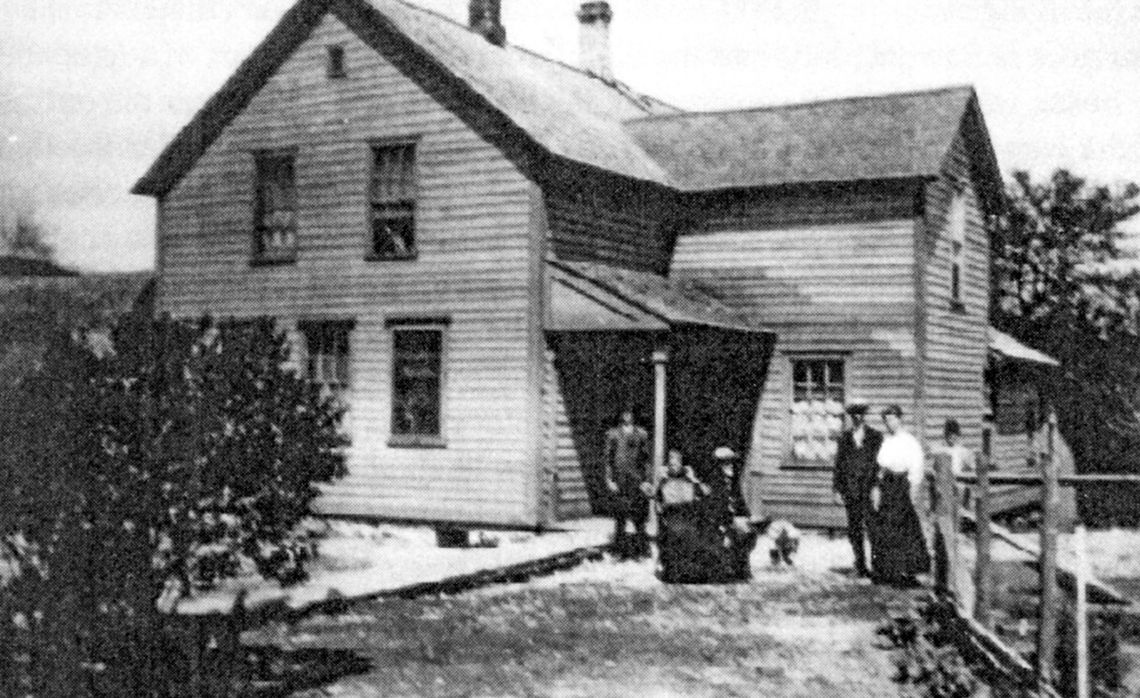The following is an excerpt from “From Bohemia to Good Harbor” by Norbert Bufka.
On Sept. 20, 1880, Charles Bufka purchased the entire 200 acres from the Tabors for $300. As death approached for Charles Bufka in 1912, he sold 120 acres to his son Joseph on Aug. 9 for $1,000 and the back 40 acres to his son Edward for $5. On Aug. 10, he deeded the other 40 acres to his wife Mary and died on Aug. 23 of cancer of the face. Heart disease caused Mary’s death on April 28, 1918.
In 1928 Mary’s 40 acres were divided among their three daughters and son, Edward. Edward received 16 acres while the three daughters, Carrie Bufka Kilway, Anna Bufka Dechow, and Celia Bufka, each received eight acres.
In 1951, my brother Jerome Bufka, purchased the eight acres Celia had owned and in 1956 my brother Joe Bufka, purchased Edward’s 40 acres. During the same time period, my brother, Raymond Bufka, purchased the eight acres that had been Anna’s from Marie and Jim Myers. Marie was the daughter of George Dago, brother of Anna’s husband John H. Dechow, according to “Our Family.” Carrie’s eight acres remained with her children. Only Anna’s eight acres passed out of ownership by a descendant of Charles and Mary Bufka. On Feb. 26, 1951, Joseph Bufka made the ownership of his acreage joint with his wife, Agnes. During the 1960s my brother, John Bufka, bought the 16-acre tract that had been owned by Edward.
On ‘Oct. 25, 1977, Joseph and Agnes Bufka gave 117 acres equally to their five living sons, pending condemnation of the property by the United States for inclusion in the Sleeping Bear Dunes National Lakeshore. During 1978 and early 1979, all but one acre (the southwestern corner of the original eight acres owned by Jerome and Clara Bufka on Little Traverse Lake) of the original 200 acres were sold under threat of condemnation to the United States Government for inclusion in the park. The possibility of this property ever becoming a Centennial Farm ended then, even though Joseph an Agnes Bufka continued to live there until their deaths.
On Oct. 25, 2003 I joined my brothers and other to help remove the personal property. We searched everywhere for personal items including our favorite places to play when we were children. Despite my support for the future of the farm, this day was very emotional for me. As my brother Ray told me one time, “ we are fortunate to have such deep roots” in this farm. This special place provided stability over the years and now it is gone from us. I don’t know how my brothers felt that day but tears flowed on my way home. Family opposition to the Lakeshore is not as united as it once was. I no longer hold any bitterness about the sale of the farm. In fact my hope is that it be preserved in some fashion.
Joe Bufka turned over the keys to the farm building in late 2003 as the lease was soon to expire in February 2004.
In a Briefing Paper for Historic Properties Management, dated March 20, 1998, the Sleeping Bear Dunes National Lakeshore indicated the historic value of the Bufka farm: “Bufka/Kropp/Eitzen Farm Landscape: Four farms adjacent to St. Paul’s Lutheran Church, on M-22 near Good Harbor, combine to form a small rural historic district. These include the two Kropp farms, the Eitzen farm and the Bufka farm. The church and its cemetery form the hub of the district. Important buildings are missing from the Kropp farms and the landscape features are not as pronounced as in other Lakeshore districts. The district is locally significant.
“The Bufka farmstead, on the west-side of M-22, is an example of a well-preserved complete farmstand. The farm has always been in the Bufka family and the original cabin is still present. The site is architecturally significant because of the type, style number and condition of the farm buildings. The Bufka family has a use and occupancy until 2004. The Bufka farm is individually eligible for the Register. The level of significance is undetermined but is likely to be more than local.”
In the spring of 2002, the preferred planning still included this comment: “Those structures and landscapes in the proposed Bufka/ Kropp/Eitzen landscape and the Port Oneida Rural Historic District, that are within the Cultural Landscape zone, would be preserved or rehabilitated for visitor understanding and/ or for compatible adaptive uses.”
There are a couple of inaccuracies in the statements above . The farm was originally owned by three others prior to the purchase by Charles Bufka, as I indicated above. Also the family cabin is believed to be the current chicken coop but there is no positive evidence, only family legend.








